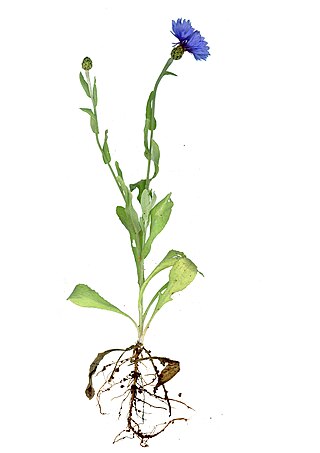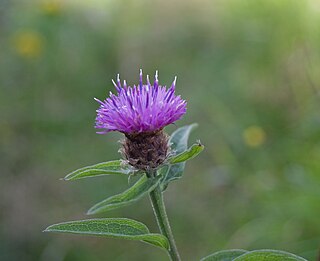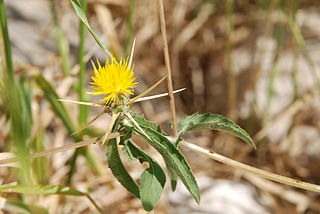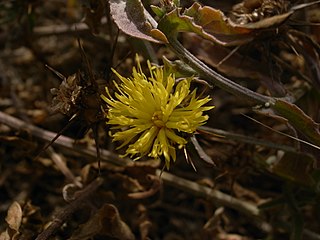
The family Asteraceae, with the original name Compositae, consists of over 32,000 known species of flowering plants in over 1,900 genera within the order Asterales. Commonly referred to as the aster, daisy, composite, or sunflower family, Compositae were first described in the year 1740. The number of species in Asteraceae is rivaled only by the Orchidaceae, and which is the larger family is unclear as the quantity of extant species in each family is unknown.

Centaurea is a genus of over 700 species of herbaceous thistle-like flowering plants in the family Asteraceae. Members of the genus are found only north of the equator, mostly in the Eastern Hemisphere; the Middle East and surrounding regions are particularly species-rich. In the western United States, yellow starthistles are an invasive species. Around the year 1850, seeds from the plant had arrived to the state of California. It is believed that those seeds came from South America.

Centaurea cyanus, commonly known as cornflower or bachelor's button, is an annual flowering plant in the family Asteraceae native to Europe. In the past, it often grew as a weed in cornfields, hence its name. It is now endangered in its native habitat by agricultural intensification, particularly by over-use of herbicides. However, Centaurea cyanus is now also naturalised in many other parts of the world, including North America and parts of Australia through introduction as an ornamental plant in gardens and as a seed contaminant in crop seeds.

Centaurea solstitialis, the yellow star-thistle, is a species of thorny plant in the genus Centaurea, which is part of the family Asteraceae. A winter annual, it is native to the Mediterranean Basin region and invasive in many other places. It is also known as golden starthistle, yellow cockspur and St. Barnaby's thistle.

Centaurea cineraria, the velvet centaurea, is also known as dusty miller and silver dust. Centaurea cineraria is in the family Asteraceae and is endemic to Italy. In natural settings, it grows on coastal cliffs, ranging from 0–350 m above sea level. Mature plants may reach 80 centimetres (31.5 in) in height. Centaurea cineraria produces purple flowers.

Centaurea akamantis, the Akamas centaurea, is a species of flowering plant in the family Asteraceae. It is found only in northwest Cyprus. Its natural habitat is Mediterranean-type shrubby vegetation. It is threatened by habitat loss. It was first published and described in Willdenowia Vol.23 on page 157 in 1993.

Psephellus dealbatus, the Persian cornflower or whitewash cornflower, is a species of Psephellus native to the Caucasus Mountains and Turkey. It is widely cultivated as an ornamental perennial.

Centaurea nigra is a species of flowering plant in the family Asteraceae known by the common names lesser knapweed, common knapweed and black knapweed. A local vernacular name is hardheads.

Centaurea ammocyanus is a species of flowering plant in the family Asteraceae. It is found in Sicily and Malta.

Rhaponticoides is a genus of flowering plants in the family Asteraceae, found in northern Africa, southern and eastern Europe, and western Asia as far east as Mongolia. They were resurrected from Centaurea.
Centaurea idaea is a species of flowering plant in the family Asteraceae. It is endemic to Crete.
Centaurea caroli-henrici, the Karl-henrikh's centaury, is a species of flowering plant in the Asteraceae family.
Centaurea demirizii, or Demiriz's centaury, is a herbaceous plant, a member of the family Asteraceae.
Erysimum deflexum, the bent treacle mustard, is a herbaceous plant, a member of the family Brassicaceae.
Centaurea acaulis, the stemless star thistle, is a species of plant in the family Asteraceae.

Centaurea hyalolepis is a species of plants in the family Asteraceae.

Centaurea nicaeensis is a plant species in the family Asteraceae.
Centaurea leptophylla, the thin-leaved centaury, is a flowering plant in the family Asteraceae. The IUCN has classified the species as critically endangered. It is native to Turkey.
Centaurea leptophylla, or Tamanyan's centaury, is a flowering plant in the family Asteraceae. The IUCN has classified the species as critically endangered.












